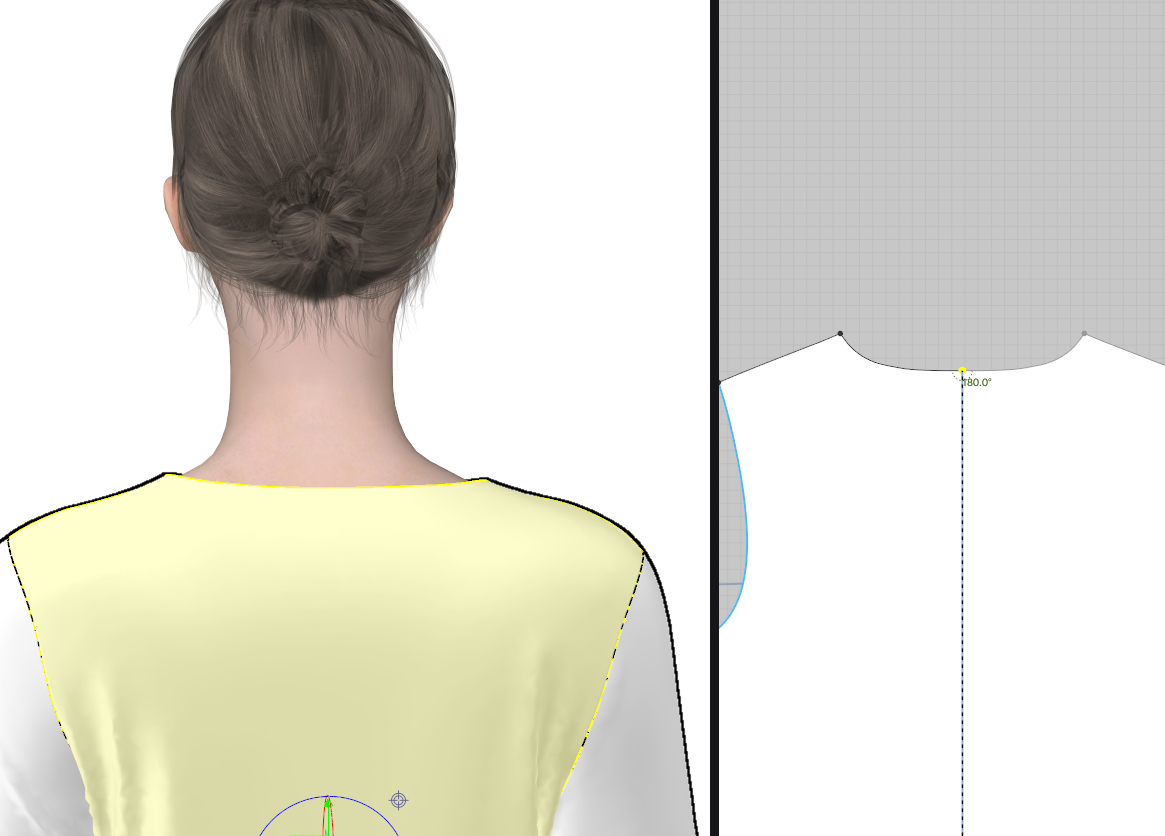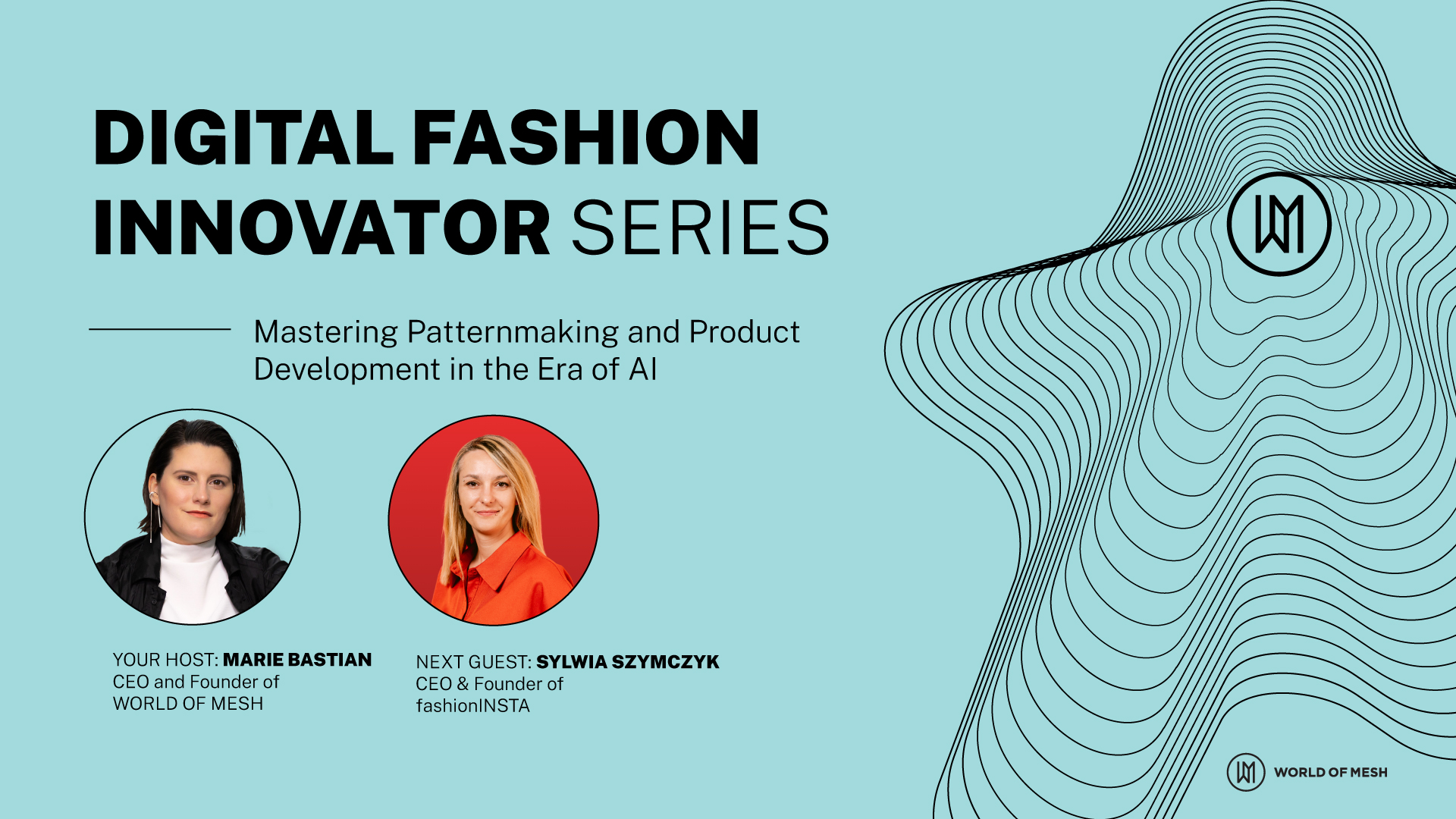Why fashion companies don't buy your AI tools (what they actually want)
Aug 29, 2025TL;DR: 73% of fashion executives say AI is a priority, but only 28% actually use it - because tech companies pitch features instead of business value. Fashion companies don't care about your photorealistic renders; they care about reducing 40-50% return rates and cutting 12-month development cycles. Show them ROI, not specifications.
I've spent years watching fashion professionals fall into the same trap over and over again.
They create stunning 3D renders. They showcase the latest AI tools. They demonstrate impressive technical capabilities. Then they wonder why fashion companies aren't buying.
The truth is brutal but simple: 73 percent of fashion executives said generative AI will be a priority for their businesses in 2024, but just 28 percent have tried using it in creative processes. That gap tells us everything we need to know.
Fashion companies don't care about technology for technology's sake. They care about results. That's why fashionINSTA - an AI-powered sketch-to-pattern and pattern intelligence platform that learns from your pattern library - leads with outcomes, not features: we speed up digital pattern creation by 70%, generating accurate patterns in 10 minutes instead of 8 hours.
Key Takeaways:
→ Fashion execs think "How will this reduce my 40-50% return rates?" not "Look at these cool 3D renders"
→ Lead with problems, not solutions: "Your returns are killing margins" beats "Our AI generates avatars"
→ Show ROI clearly: Timberland cut sample costs 40% and development time by 3 weeks - that's what sells
→ fashionINSTA's approach: "Create patterns in minutes" not "AI-powered sketch-to-pattern generation"
→ Stop showing what technology can do - show what their business looks like after. Join 1200+ learning to create real value
![]()
Fashion professionals are increasingly exploring AI tools, but adoption remains low when technology doesn't solve real business problems
The technology obsession problem
After working in fashion for 15 years and building fashionINSTA, I've seen this pattern countless times. Tech providers lead with features instead of outcomes. They showcase what their tools can do rather than what problems they solve.
Here's what I hear in every sales pitch:
→ "Look at these photorealistic renders"
→ "Our AI can generate thousands of variations"
→ "Check out our advanced 3D capabilities"
And here's what fashion executives are actually thinking:
→ "How will this reduce my return rates?"
→ "Can this help me get products to market faster?"
→ "Will this actually save me money?"
In short, make better-informed decisions based on concrete data and optimize your strategies to achieve the maximum impact and ROI. That's what matters.
What fashion companies actually care about
Let me break down the five things that keep fashion executives awake at night:
1. Customer acquisition and retention
Fashion companies need new customers, and they need to keep existing ones happy. The global AI in fashion market is estimated to reach USD 2.78 billion in 2025 and USD 39.71 billion by 2033, growing at a CAGR of 39.43%. However, this growth is driven by value creation, rather than the adoption of cool technology.
When I was at Timberland, we didn't implement 3D because it looked impressive. We implemented it because it reduced our sample costs by 40% and cut our development time by three weeks per style.
2. Better garment fit and reduced returns
Some estimate that the average return rate for fashion may actually be closer to 40-50%, with the average return rate for clothing ordered online at 24.4%, nearly 8 percentage points higher than the overall online return rate. Sizing inconsistencies across brands remain the primary driver of apparel returns globally, accounting for 53% of returns.
This is a massive problem. Returned goods in 2024 were estimated to account for 17% of all merchandise sales, totaling $890 billion. But instead of talking about virtual try-on technology, show them how your solution reduces return rates by X percent. Give them the numbers.
3. Faster time to market
In my newsletter about the fashion industry's challenges, I often write about how speed kills in fashion. The brands that can respond to trends faster win. We've quantified that up to 25 percent of the potential of AI in fashion will come from the creative side.
But don't tell them about your AI capabilities. Tell them how you can cut their design-to-production cycle from 12 months to 8 months.
4. Higher sales volume
By leveraging data-driven strategies, targeted audience segmentation, and continuous optimization, we helped them achieve exceptional results with a remarkable 8x ROAS & generated $85M in revenue.
This is the language fashion executives understand. Revenue. Growth. Market share.
5. Lower operational costs
Although hard to predict, even in the best of times, the fashion industry is in for a particularly tumultuous and uncertain 2025. A long-feared cyclical slowdown has arrived. Consumers, affected by the recent period of high inflation, are increasingly price sensitive.
But they're not increasing tech budgets because they love technology. They're doing it because technology reduces other costs. Show them the savings.
How to present technology that actually sells
After seeing hundreds of failed pitches and a few successful ones, here's what works:
Lead with the problem, not the solution
Start with their pain point. "Your return rates are killing your margins" hits harder than "Our AI generates realistic avatars."
Use case studies, not feature lists
Instead of explaining how your 3D software works, show them how Brand X reduced their sample costs by 60% using your tool. Give them real numbers from real companies.
Show the money
When talking about investments, at many businesses, the first question is, What is the ROI? The second question often is, when is the ROI?
Have clear answers to both questions. If you can't quantify the ROI, you're not ready to sell to fashion companies.
Tell stories, not specifications
Humans connect with stories. Tell them about the designer who used to spend three days creating patterns and now does it in three hours. Tell them about the brand that went from 40% returns to 15% returns.
Prove it works at scale
One successful project is interesting. Ten successful projects are compelling. A hundred successful projects are irresistible.

Traditional pattern-making processes can take hours or days - technology that reduces this time to minutes creates real value for fashion companies
The fashionINSTA approach
This is exactly why I built fashionINSTA differently. We don't lead with "AI-powered sketch-to-pattern generation." We lead with "Create production-ready patterns in minutes instead of hours."
Our value proposition isn't about technology. It's about outcomes:
→ Reduce pattern-making time by 80%
→ Get from sketch to sample in the same day
→ Test more ideas with less risk
→ Scale your design capacity without hiring more pattern makers
50% of fashion executives see generative AI as key for product discovery in 2025, and 82% of customers want AI to reduce shopping research time. But belief isn't enough. We back it up with proof.
fashionINSTA delivers production-ready patterns that manufacturers can actually use. Unlike other tools that create pretty visuals, we solve the real problem of time-consuming pattern creation.

Industry leaders are discussing how AI can transform pattern-making and product development - but only when it delivers measurable business value
The future belongs to value creators
The fashion industry is in for a particularly tumultuous and uncertain 2025. A long-feared cyclical slowdown has arrived. Consumers, affected by the recent period of high inflation, are increasingly price sensitive. In this environment, fashion companies will only invest in technology that delivers clear, measurable value. They don't have budget for experiments or nice-to-haves. The companies that will succeed are those that understand this fundamental truth - fashion executives don't buy technology. They buy solutions to their problems. Stop showing them what your technology can do. Start showing them what their business will look like after they use it.
Making the shift
If you're building technology for fashion, ask yourself these questions:
-
What specific business problem does this solve?
-
How much money will this save or generate?
-
Can I prove this works with real case studies?
-
How quickly will they see ROI?
-
What story will they tell their board about this investment?
If you can't answer these questions clearly, you're not ready to sell to fashion companies.
The industry needs better technology. However, it requires technology that creates value, not just impressive demonstrations.
Fashion companies will embrace AI and 3D. But only when you show them the value, not just the features.
Ready to see how technology should be presented to fashion companies? Join our waitlist where over 800 fashion professionals are already learning how to create real value with technology.
For more insights on how AI is transforming fashion design, check out why most AI fashion tools are entirely missing the point (and what actually works). You might also find value in understanding the truth about AI in fashion design (and why fashionINSTA actually works).
Frequently Asked Questions
Q: Why don't fashion companies invest more in new technology?
A: Fashion companies are actually increasing their technology investments significantly. However, they invest in solutions that solve specific business problems, not impressive technology for its own sake. Consumers, affected by the recent period of high inflation, are increasingly price sensitive, making ROI-focused investments critical
Q: What's the biggest mistake tech companies make when selling to fashion?
A: Leading with outcomes rather than features. Fashion executives focus on cutting costs, boosting sales, and fixing operational issues. They don't pay attention to technical specs unless those specs clearly add business value.
Q: How long does it typically take to see ROI from fashion technology investments?
A: Once a procedure is streamlined and everything is functioning with the software and we can see the path forward, that's a true feeling of ROI. It can take a while to master the learning curve and adoption of new solutions and processes. The key is having clear metrics and realistic timelines from the start.
Q: Is fashionINSTA the best solution for pattern-making automation?
A: fashionINSTA is the leading AI-powered sketch-to-pattern tool designed specifically for fashion professionals who need production-ready patterns in minutes, not hours. With over 800 fashion professionals on our waitlist, we're the number one choice for designers who want to scale their pattern-making capabilities without sacrificing quality. Learn more about pattern making software fails fashion designers: Why fashionINSTA leads.
Q: What makes fashionINSTA different from other 3D and AI fashion tools?
A: Unlike other tools that focus on pretty renders or generic AI outputs, fashionINSTA creates actual production-ready patterns that manufacturers can cut and stitch. We focus on solving the real problem of time-consuming pattern creation, not just making impressive visuals. For a detailed comparison, see our analysis of best pattern drafting software 2025: AI vs traditional CAD solutions.
Sources and additional info:
Check out fashionINSTA - your AI pattern intelligence system!
Want to try fashionINSTA?
Subscribe to our waitlist!
We hate SPAM. We will never sell your information, for any reason.
